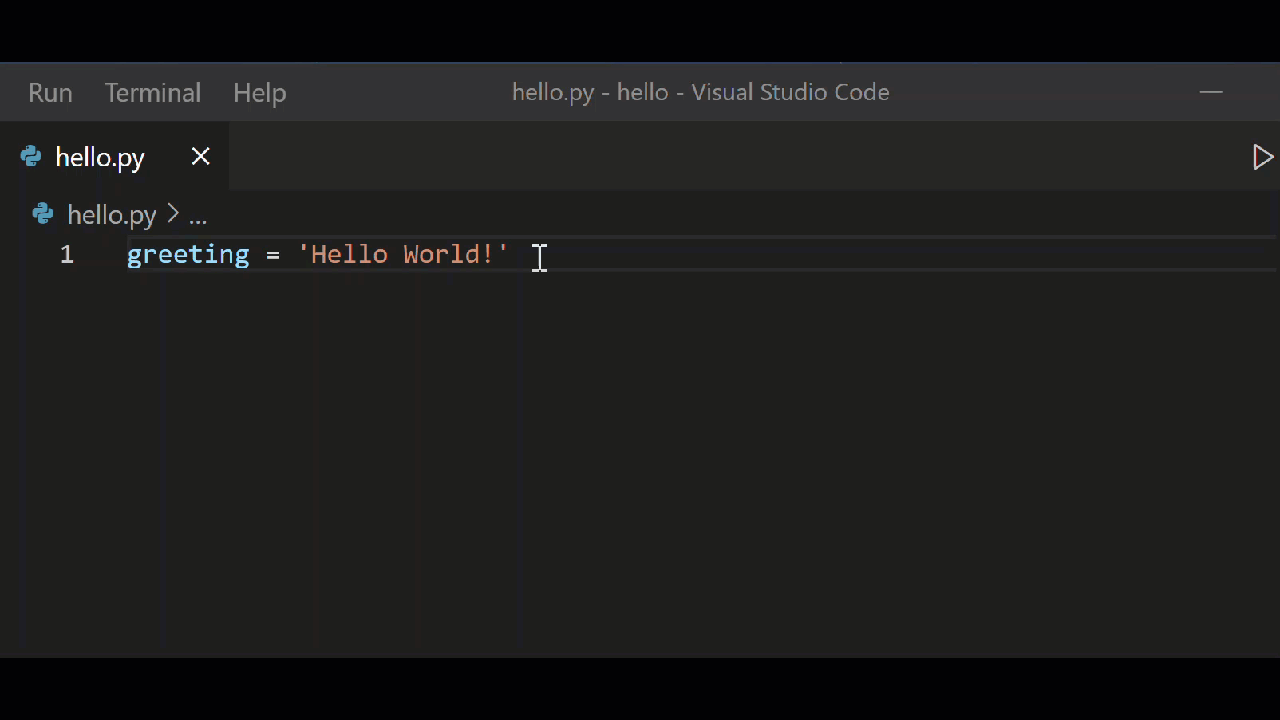

- Cant you run python in visual studio how to#
- Cant you run python in visual studio code#
- Cant you run python in visual studio series#
I love the code completion and templates of visual studio, and I can't wait to solve this (noob) question. I have used IDLE in the past, and now I think it is time to make the change to a bigger IDE. One of the videos touched on using the interactive shell, but even in the video, when he clicked the Start (Run) button, the code ran in what looked like the command line.
Cant you run python in visual studio series#
I've done some google searching, and I watched the Visual Studio python official Microsoft series about it. This seems like a question that a simple Google Search could fix, but for some reason I cannot find the answer. My question is: how can I make it so that when I hit F5 my code is executed in the interactive Python shell much like it does on the basic IDLE that comes with Python. Right now when I hit F5 an Anaconda 3 cmd line window comes up with the prompt "Press any key to continue." comes up. Press any key to close the window and return to the Visual Studio editor. It's similar to running a Python interpreter with PythonApplication1.py from the command line. When you run the program, a console window will display the results.
Cant you run python in visual studio how to#
I am trying to figure out how to run code such that it runs in the interactive shell. Visual Studio warns you if you still have errors in your code. If compilation works then run your program with the command downloaded and installed Visual Studio along with Anaconda to get access to all of the packages that come pre installed with Anaconda. Open the VS command prompt and type cl hello.cpp (You may need to enter the whole path to your file, or use the cd command if you're familiar with that). Use notepad to write a 'hello world' program into a file named hello.cpp. There should be a shortcut in the Visual Studio start menu folder that's named something like 'visual studio command prompt'. Or as long as you are just working with a single file learn about invoking the compiler directly. I'd say start with the win32 console project template. But once you have more than a couple files it starts making sense to use some sort of project file to handle the process for you, which is the reason it's usually done that way in the first place. Also you can manually invoke the c++ compiler for a single file to get an exe pretty easily. There in fact are c++ interpreters similar to the python interpreter you use to run Python files. The extension makes VS Code an excellent Python editor, and works on any operating.

Also you can manually invoke the c++ compiler for a single file to get an exe pretty easily. Thats not to say you cant just run a c++ file, but that its not the normal way of doing things with c++. Working with Python in Visual Studio Code, using the Microsoft Python extension, is simple, fun, and productive. That's not to say you can't just run a c++ file, but that it's not the normal way of doing things with c++. This processing uses a bunch of configuration which is what the project file is all about. Chances are that, if you’re doing this kind of thing, you’ll be wanting to use a virtual environment too. I’m going to do the example from scratch in five steps: Make virtual environment. In this blog post, I give an example of how to get it working. That means c++ source gets processed by another program, called a compiler or compiler driver, that produces the thing you actually run. Visual Studio Code has the ability to debug mixed Python with C++ extensions. C++ is traditionally a compiled language.


 0 kommentar(er)
0 kommentar(er)
